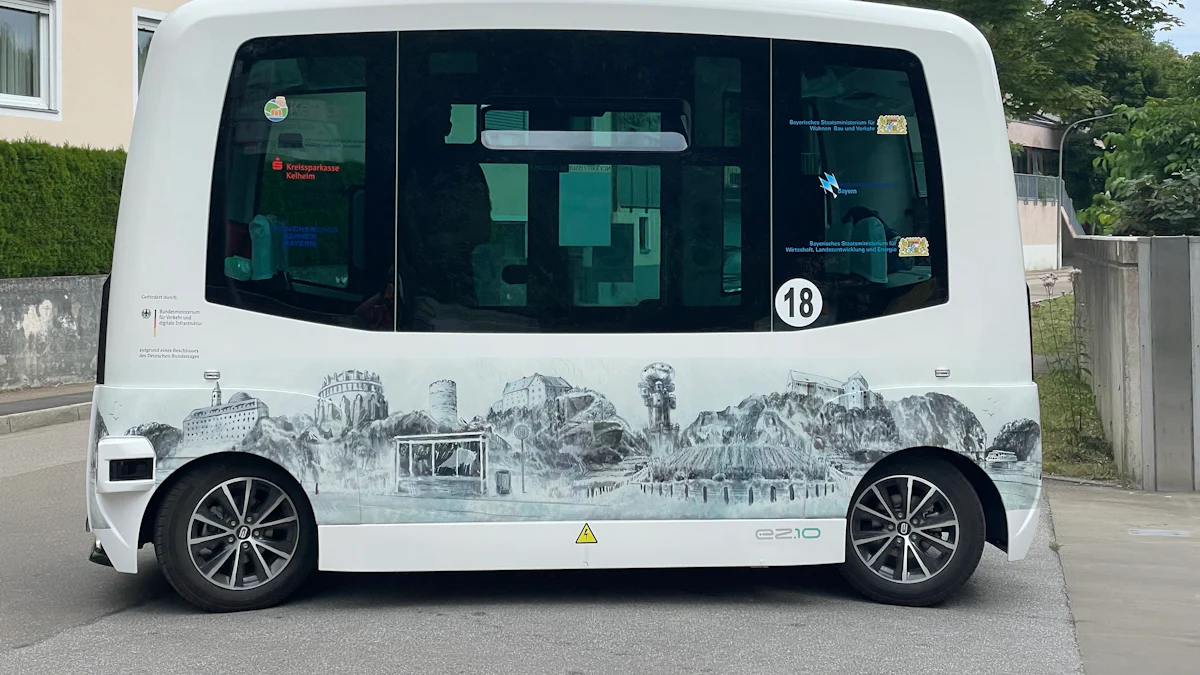
Transforming Urban Mobility
In the near future, Google’s self-driving car is set to revolutionize urban mobility. The anticipated impact of Google’s autonomous vehicle in 2024 extends beyond transportation, with the potential to enhance safety, alleviate congestion, and reshape public transit systems. This transformative introduction of Google’s self-driving car is poised to have profound implications for urban life and the planning of cities.
Enhancing Safety and Reducing Congestion
Autonomous Features for Safety
Google’s self-driving car integrates a range of autonomous features designed to significantly enhance safety on the roads. These advanced technologies work cohesively to mitigate the potential for human error, a leading cause of accidents in traditional vehicles. By leveraging state-of-the-art sensors, cameras, and real-time data processing, the self-driving car can anticipate and react to road conditions and potential hazards with unparalleled speed and precision.
Alleviating Traffic Congestion
The introduction of Google’s self-driving car holds the promise of alleviating traffic congestion through its ability to optimize routing and minimize traffic incidents. With autonomous vehicles seamlessly communicating with each other and traffic infrastructure, the result is expected to be a substantial reduction in traffic congestion. This improved flow of vehicles is poised to lead to more efficient travel times and a significant decrease in overall urban gridlock.
Environmental Impact and Economic Implications
Reducing Carbon Emissions
The integration of Google’s self-driving car aims to curtail carbon emissions by implementing optimized driving patterns and energy-efficient technologies. Through the utilization of advanced algorithms and real-time data analysis, the self-driving car can make informed decisions to minimize fuel consumption and reduce the overall carbon footprint. This concerted effort aligns with Google’s commitment to environmental sustainability, contributing to a greener and more eco-friendly urban landscape.
Economic Impact on the Automotive Industry
The introduction of Google’s self-driving car is poised to trigger significant economic implications within the automotive industry. As autonomous vehicles become more prevalent, there is a potential for transformative changes in manufacturing processes and consumer preferences. This shift may lead to an evolution in market demand, prompting automakers to adapt their production strategies and invest in cutting-edge technologies that support the development of autonomous vehicles. Furthermore, advancements in self-driving technology could pave the way for new business models and revenue streams, reshaping the automotive industry’s landscape.
SEO Note: Google’s self-driving car (1), Google project self-driving car (1)
Transformation of Public Transportation and City Planning
Revolutionizing Public Transportation
The integration of Google’s self-driving car technology has the potential to revolutionize public transportation systems, ushering in a new era of convenient and efficient mobility options for urban dwellers. By incorporating autonomous vehicles into public transit, cities can offer enhanced accessibility and improved transit experiences to their residents. This shift towards autonomous public transportation is expected to provide a seamless and interconnected network that caters to the diverse needs of urban commuters, ultimately transforming the way people navigate metropolitan areas.
Impact on City Planning and Infrastructure
The introduction of Google’s self-driving car is likely to necessitate significant changes in city planning and infrastructure to accommodate the widespread use of autonomous vehicles and promote seamless urban mobility. As cities embrace this transformative technology, urban planners may need to reevaluate existing infrastructure and develop innovative solutions to integrate self-driving cars into the fabric of city life. This could lead to substantial transformations in urban development and transportation networks as cities adapt to meet the demands of a future where autonomous vehicles play a central role in shaping city mobility.
Shaping the Future of Urban Life
In the coming years, Google’s self-driving car is poised to usher in a new era of urban life, fundamentally transforming the way people move within cities and interact with their surroundings. The integration of autonomous vehicles is not just about transportation; it represents a shift towards a more interconnected and sustainable urban landscape. With enhanced safety measures, reduced congestion, and environmentally conscious driving patterns, Google’s self-driving car technology is set to redefine urban mobility for the better.
The potential impact of Google’s self-driving car on urban life in 2024 encompasses transformative changes in mobility and city infrastructure.
Google’s self-driving car is poised to shape the future of urban life through enhanced safety, reduced congestion, and sustainable transportation.
The integration of Google’s self-driving car technology is set to redefine urban mobility, paving the way for a more efficient and interconnected urban landscape.
See Also
The Influence of Ride-Share Vehicle Advertising Device on Customer Satisfaction
The Effect of Play Octopus on Rideshare Ads: Revolutionizing Tablet Advertisements
The Influence of Out-of-Home Advertising on Marketing: Differentiating in the Market
Boosting Online Engagement: Harnessing the Power of Bus Advertising
